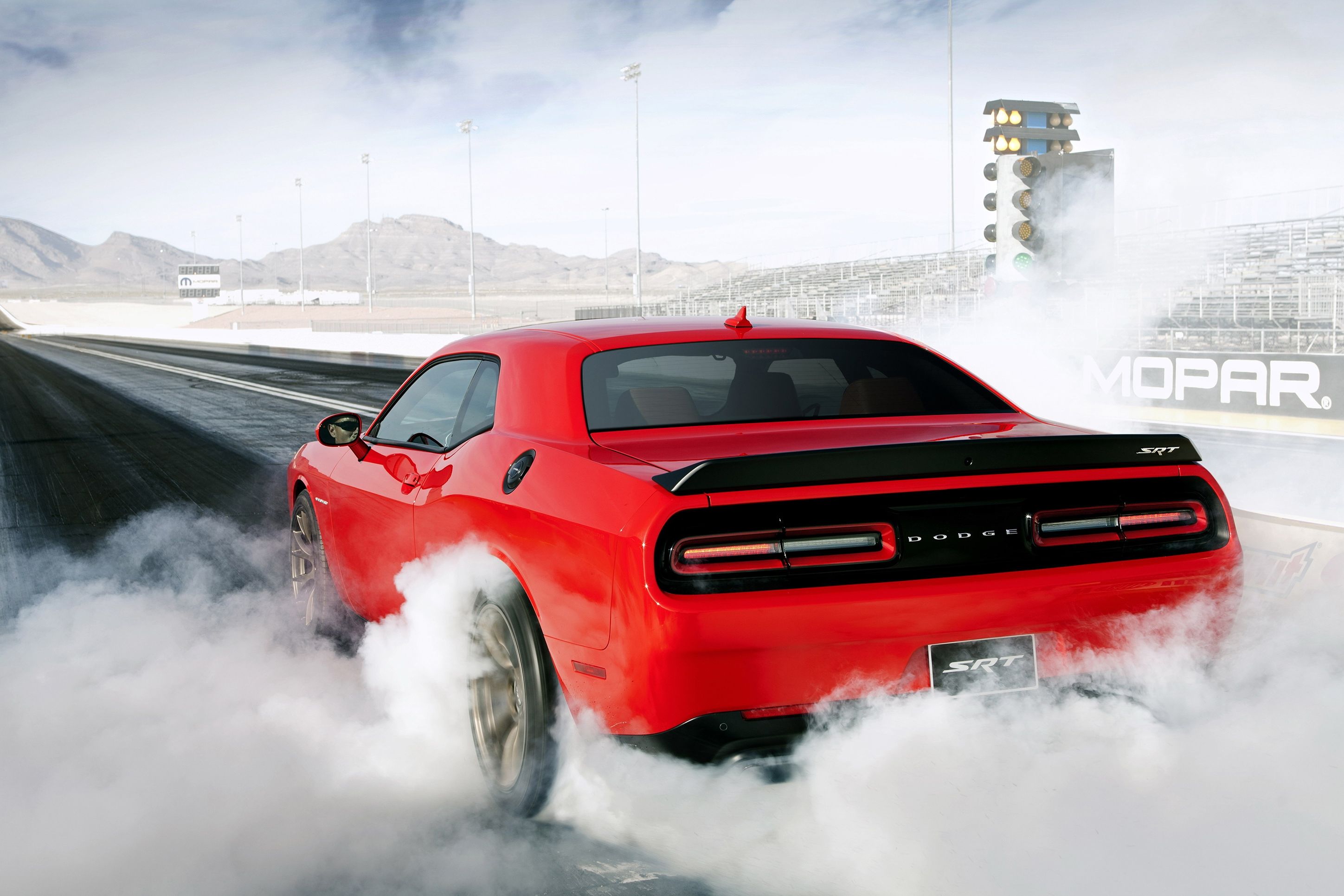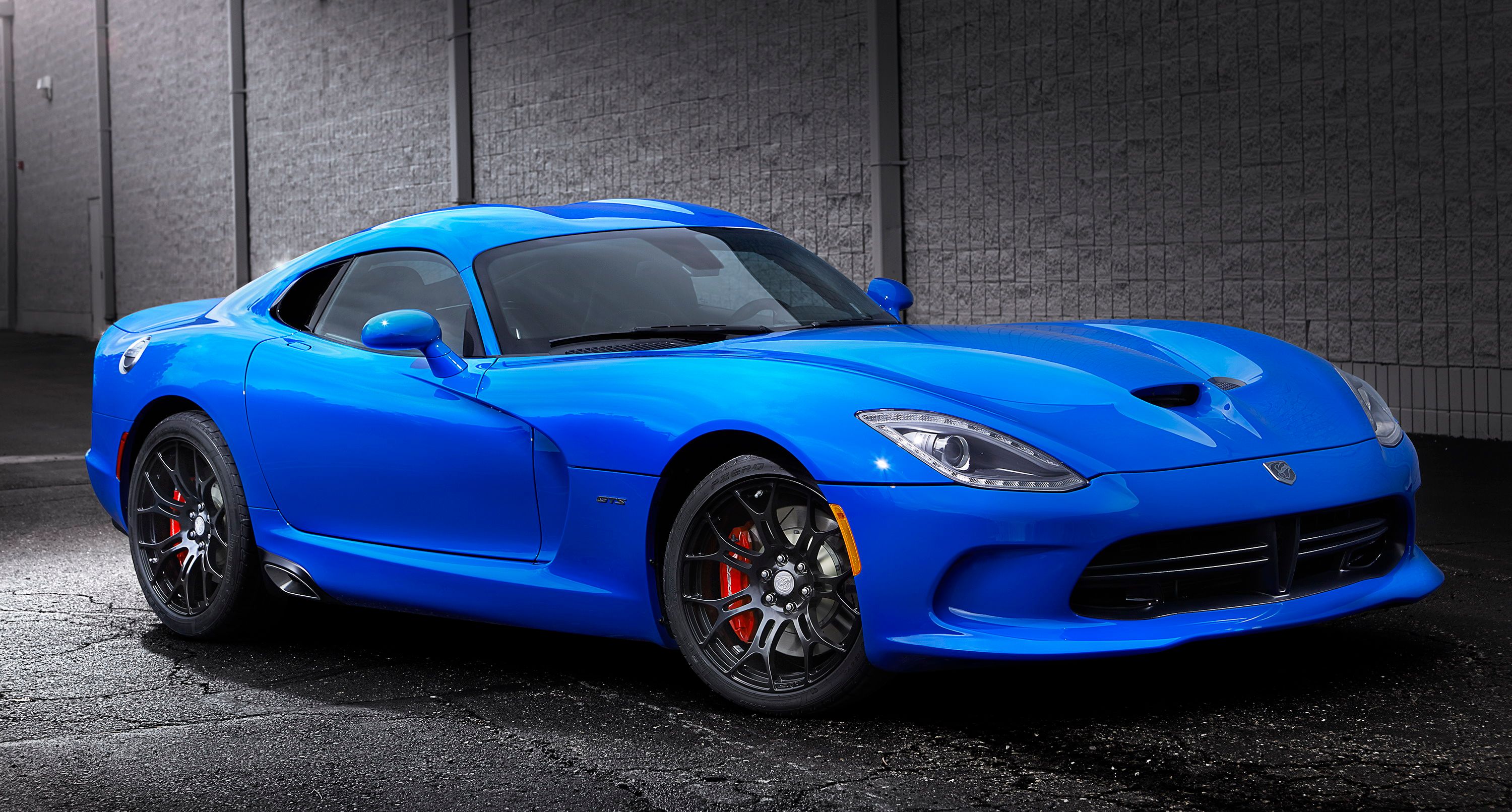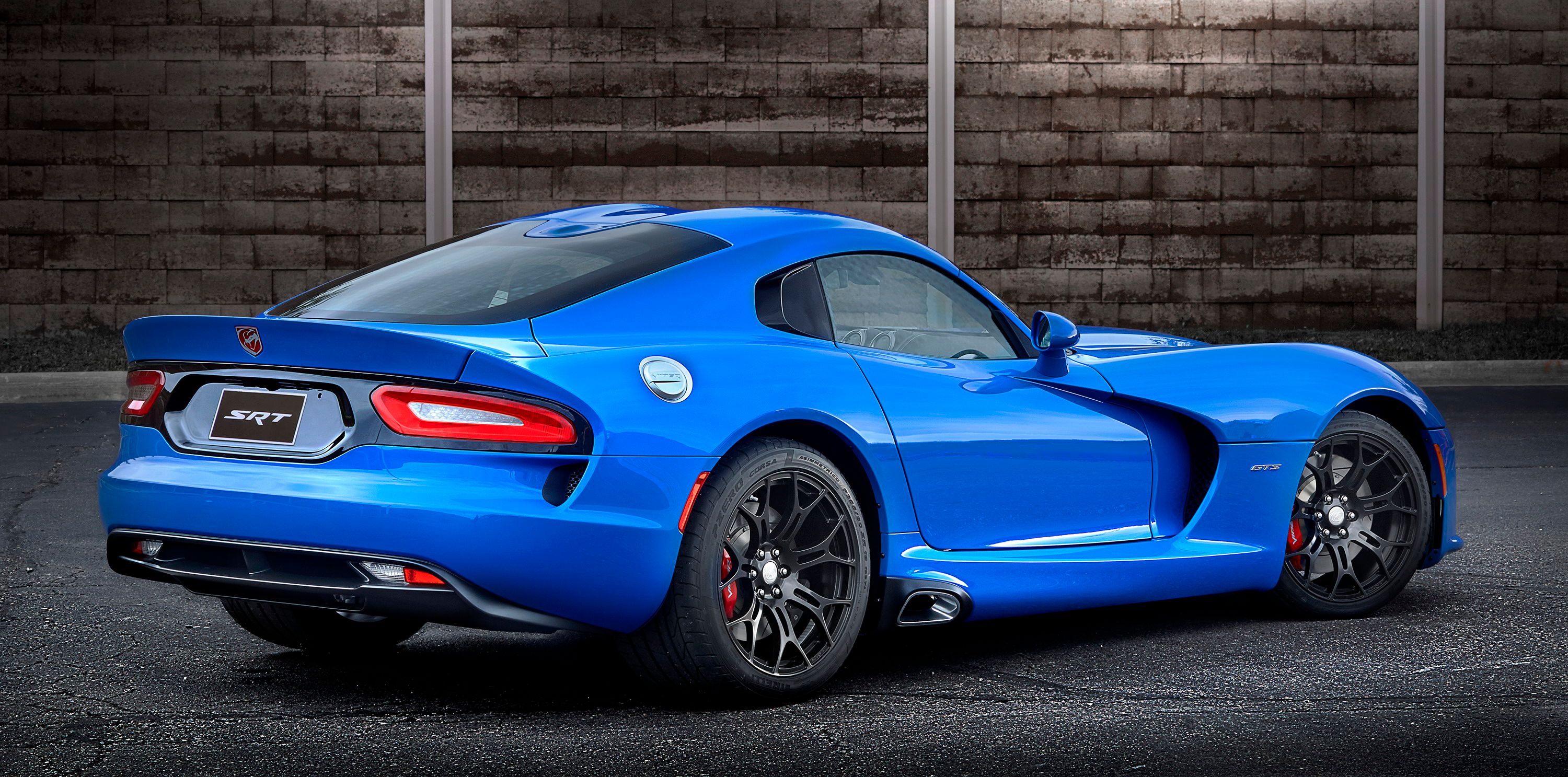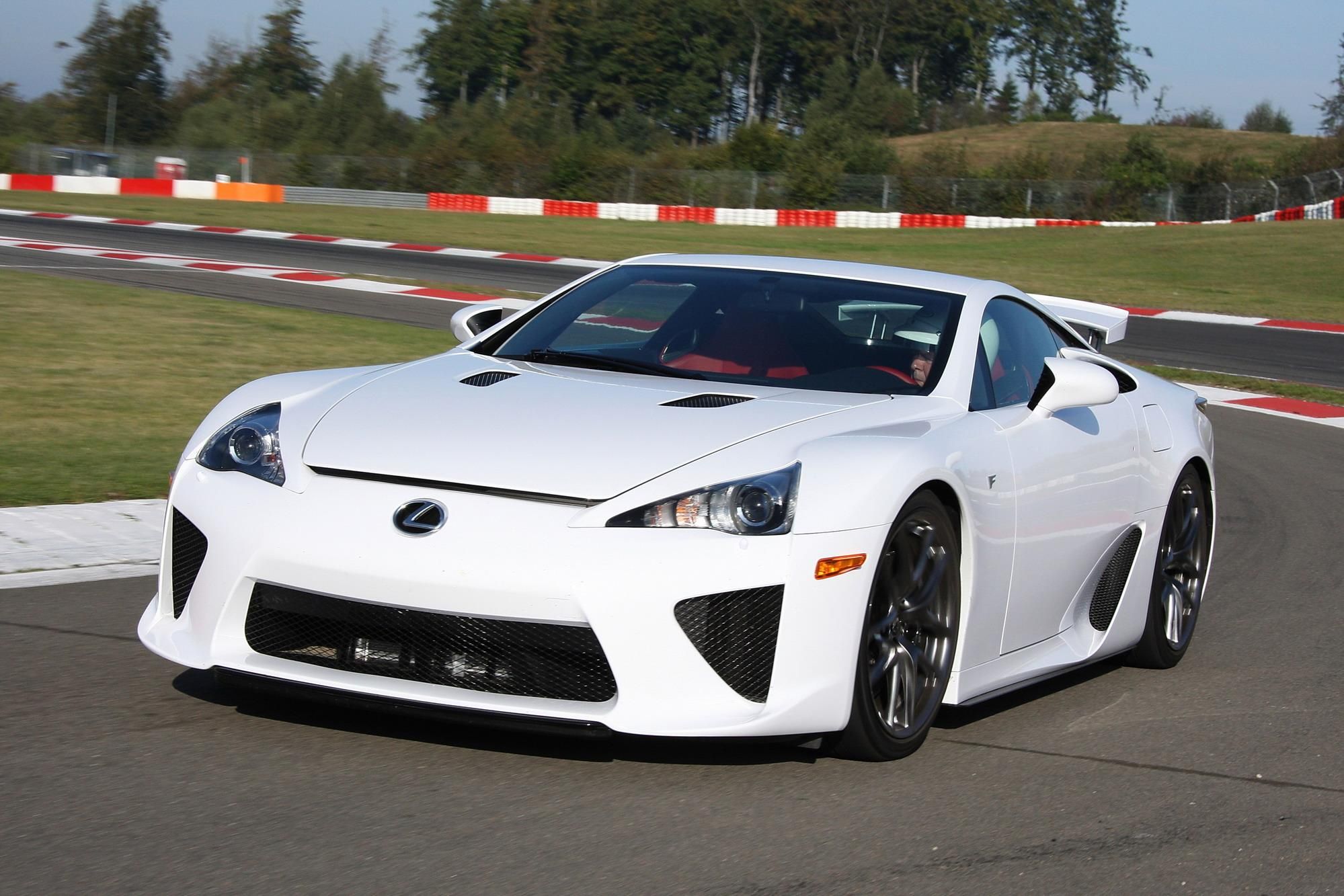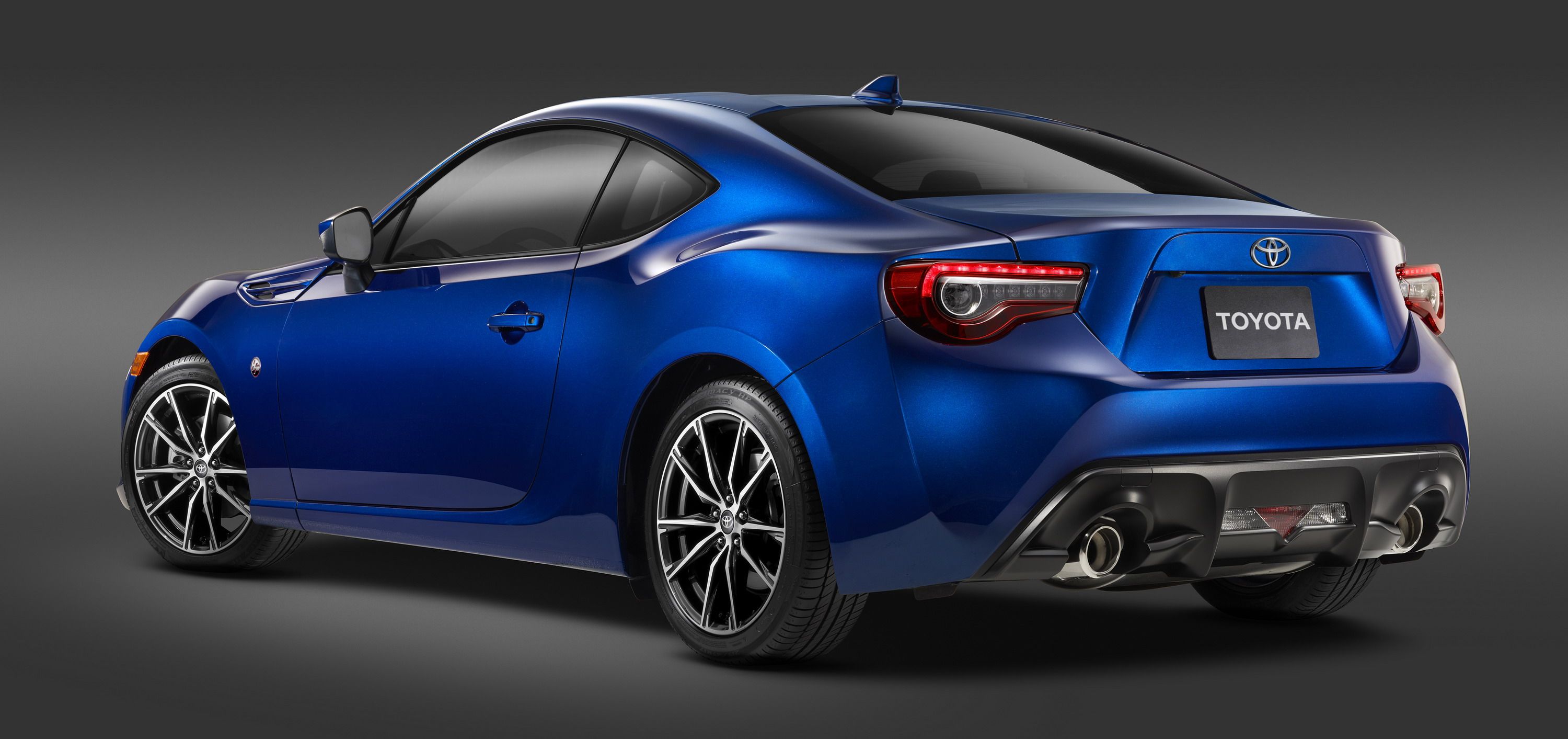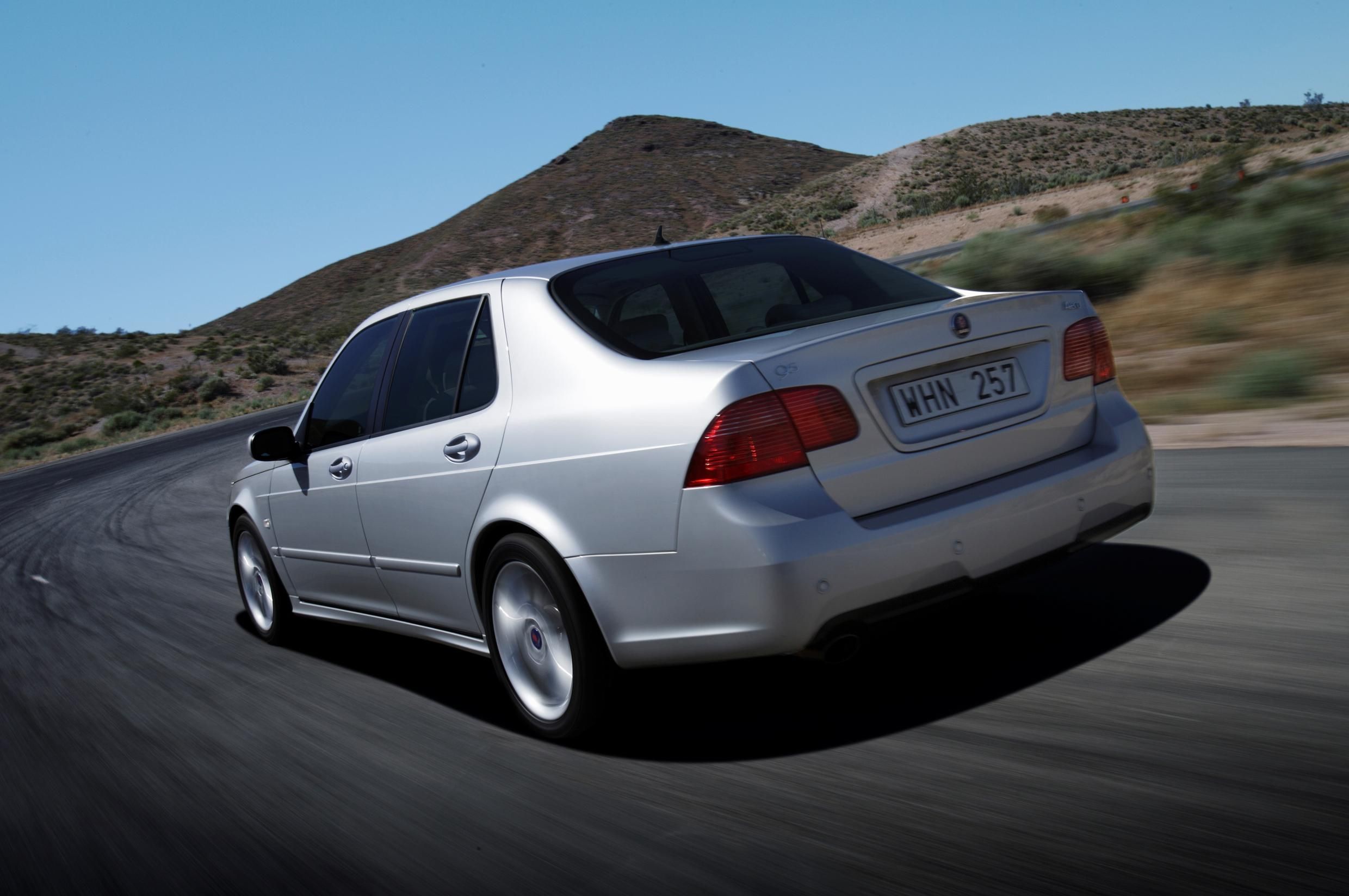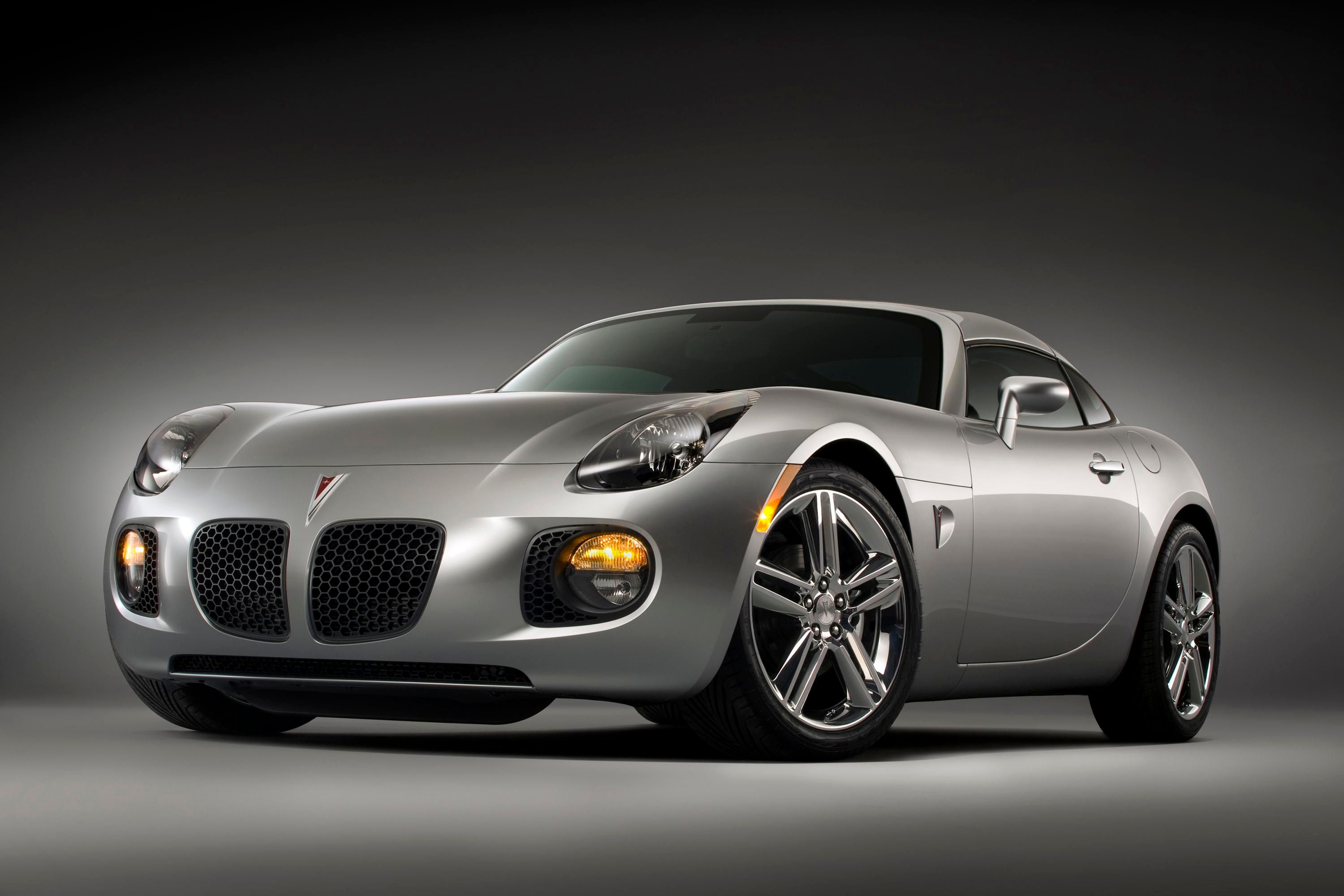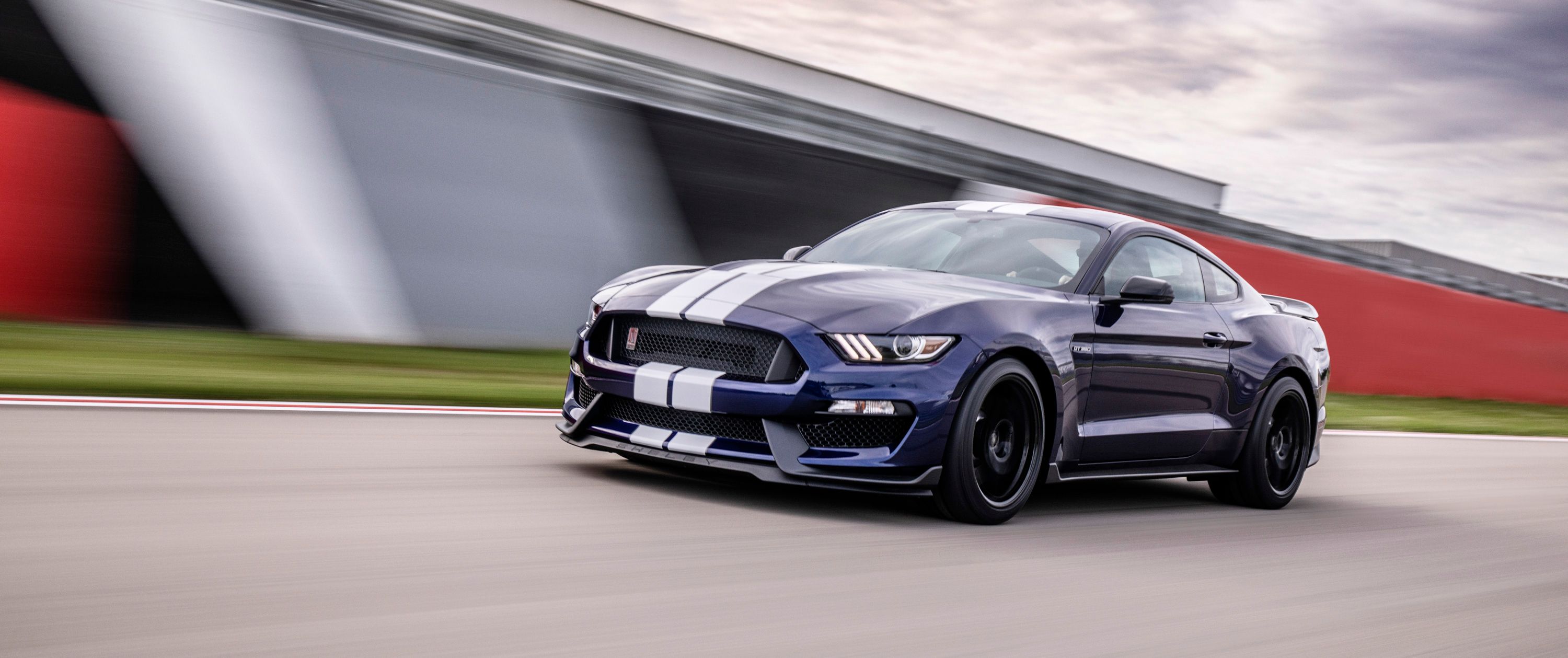Every car that is considered a classic these days started life like all other cars that came before and after it. These classics, though, stood out from the rest of its kind, whether it was due to their exclusivity, memorability, or simply because so many people loved them. There’s no exact science to determine which car has “potential classic car” written all over them; a series of events or circumstances typically tips the balance in their favor. Some cars take a while to be considered a classic whereas others — like the Dodge Challenger SRT Demon — are already there despite them being in the market only recently. With so many cars to choose from that arrived in the last decade or so, we identified 10 models that have the potential to become classics in the future. How long it’ll take for them to get that level is another question entirely. But in the case of this exercise, all 10 of these rides have the chance to reach that level.
Dodge Viper
It came with all the things you wanted in a sports car, including a monstrous 8.4-liter V-10 engine that produced as much as 640 horsepower and 600 pound-feet of torque. The Viper’s uncompromising character and performance capabilities were never in short supply in the 20-something years that it was in the market.
Unfortunately, Dodge doesn’t sell the Viper anymore, but the legacy of the sports car — over three generations with more than 100,000 units sold — remains intact. Not everyone came to be fans of the Viper, but those who swear by the sports car will tell you that as far as American performance vehicles go, this was the most uncompromising of them all. What you see with the Viper is exactly what you get out of it. That kind of reputation should stand the test of time, and it won’t be long before the Dodge powerhouse of a sports car gets its due as a classic.
Dodge Viper specifications
|
Engine: |
8.4-liter V-10 (third-generation Viper) |
|---|---|
|
Horsepower: |
640 horsepower |
|
Torque: |
600 pound-feet of torque |
|
0 to 60 mph: |
3.5 |
|
Top Speed: |
208 mph |
|
Curb Weight: |
3,354 pounds (1,521 kilos) |
|
Power-to-weight ratio (US tonne): |
382 |
|
MSRP Price: |
N/A |
|
Used-Car Price (average): |
$50,000 |
Read our full review on the Dodge Viper
Ford F-150 Raptor
Pickups don’t usually appreciate in value over time, in part because their very nature of function over form requires them to get beat up by the time they’re replaced with a new model. So what’s the Ford F-150 Raptor doing on this list? See, the F-150 Raptor isn’t your typical pickup. It boasts all the qualities of one, but it also packs enough power and performance capabilities to double as a performance car. Mind you, we’re talking about a truck that also has traces of exotic car abilities in its DNA. That combination separates the F-150 from every other truck in the market today. It’s also that distinction that sets the F-150 Raptor up on the fast track to becoming a classic vehicle in the future.
Ford F-150 Raptor specifications
|
Engine: |
3.5-liter turbocharged V-6 engine (third-generation Viper) |
|---|---|
|
Horsepower: |
450 horsepower |
|
Torque: |
510 pound-feet of torque |
|
0 to 60 mph: |
5.1 seconds |
|
Top Speed: |
107 mph |
|
Curb Weight: |
5,525 pounds (2,506 kilos) |
|
Power-to-weight ratio (US tonne): |
163 |
|
MSRP Price: |
$45,190 |
|
Used-Car Price (average): |
$30,000 |
Read our full review on the Ford F-150 Raptor
Lexus LFA
The Lexus LFA represented a lot of things for Lexus. Known largely as Toyota’s premium brand, Lexus’ drive to be considered a major player in the premium car segment came to a head in 2010 with the arrival of the car that completely changed people’s perception of Lexus. The LFA was, for all intents and purposes, Lexus’ one-and-only halo car. Not only did it showcase Lexus in a totally different light, but it also put the brand on the map as a challenger to Europe’s elite. Only 500 units of the LFA were released, including the super-exclusive, circuit-tuned LFA Nurburgring Edition. The LFA officially exited the market in 2012 and Lexus has yet to launch a true follow-up halo model. That only adds to the appeal of the LFA as a future classic.
Lexus LF-A Specifications
|
Engine: |
4.8-liter turbocharged V-10 engine |
|---|---|
|
Horsepower: |
563 horsepower |
|
Torque: |
354 pound-feet of torque |
|
0 to 60 mph: |
3.6 seconds seconds |
|
Top Speed: |
203 mph |
|
Curb Weight: |
3,559 pounds (1,614 kilos) |
|
Power-to-weight ratio (US tonne): |
316 |
|
MSRP Price: |
$375,000 |
|
Used-Car Price (average): |
$450,000 |
Read our full review on the Lexus LFA
BMW 1M
One of the things you look for in assessing a model’s chance to become a future classic is production volume, as in how many models were produced by the automaker. Lexus, for example, produced only 500 units of the LFA. In BMW’s case, the German automaker produced more than 6,000 models of the 1 Series M Coupe, or 1M, as it’s come to be known today. 6,000 units may sound like a lot, but it’s not relative to other models that BMW routinely produces.
The BMW 1M was first thought of as an oddity by a lot of people. BMW hadn’t dipped its toes in the compact car market until the 1 Series was launched in 2004. With that model in place, Bimmer decided to go all-out, introducing a high-performance version that packed 330 horsepower in a body that’s as tightly packed as any car BMW has created. The 1M not only boasted a lightweight body and a powerful turbocharged six-cylinder engine, but it also came with a six-speed manual and a race-tuned suspension. That was a perfect cocktail for a car that turned out to be one of BMW’s best releases in recent memory. Bimmer has since retired the 1M, but second-hand prices of the model have steadily increased in recent years. That’s as clear a sign as any that the 1M is on track to be a future classic.
BMW 1 M Specifications
|
Engine: |
3.0-liter turbocharged six-cylinder engine |
|---|---|
|
Horsepower: |
330 horsepower |
|
Torque: |
368 pound-feet of torque |
|
0 to 60 mph: |
4.7 seconds seconds |
|
Top Speed: |
155 mph |
|
Curb Weight: |
2,886 pounds (1,300 kilos) |
|
Power-to-weight ratio (US tonne): |
229 |
|
MSRP Price: |
$47,000 |
|
Used-Car Price (average): |
$60,000 |
Read our full review on the BMW 1M
Toyota 86
The Toyota 86 is an interesting car to add to this list. On the one hand, the 86, alongside its sibling, the Subaru BRZ, got off to an auspicious start when it hit the market earlier this decade. A lot of people were disappointed in its stock form, though it wasn’t until much later that people realized that buying the 86 in its stock form is just the start of the ownership journey. You buy the 86 to have it customized; it’s a page Toyota took from the old JDM playbook of the late 1990’s and early 2000’s. Since then, the perception surrounding the sports coupe has changed dramatically. It remains a popular choice among those who are looking for an affordable sports car that can be personalized to suit their taste and preferences. It didn’t start off on the right foot, but the 86, and perhaps the BRZ, is now a candidate to become a future classic car.
Toyota 86 specifications
|
Engine: |
2.0-liter four-cylinder engine |
|---|---|
|
Horsepower: |
205 horsepower |
|
Torque: |
156 pound-feet of torque |
|
0 to 60 mph: |
6.0 seconds |
|
Top Speed: |
145 mph |
|
Curb Weight: |
2,862 pounds (1,298 kilos) |
|
Power-to-weight ratio (US tonne): |
144 |
|
MSRP Price: |
$27,000 |
|
Used-Car Price (average): |
$20,000 |
Read our full review on the Toyota 86
BMW M4 CS
The BMW M4 CS’ road to collectible status was stamped the moment it was launched in 2017. Not only is it based on a first-generation model — the BMW 4 Series — but it was developed as a more capable version of what was already regarded as one of the finest sports coupes in the market: the BMW M4. The improvements BMW made to the M4 CS ranged from a more potent engine, improved aerodynamics, better brakes, and a suspension setup that provided an even better ride than the already sublime M4. The real kicker, though, is production volume. BMW limited production of the M4 CS to only 3,000 units, making it extremely collectible to a lot of BMW fans. In some ways, the M4 CS captures the perfect storm of a true collectible. It’s a first-generation model that also happens to be as rare as any first-gen model you’ll see.
BMW M4 CS specifications
|
Engine: |
3.0-liter inline-six cylinder engine |
|---|---|
|
Horsepower: |
453 horsepower |
|
Torque: |
443 pound-feet of torque |
|
0 to 60 mph: |
3.7 seconds |
|
Top Speed: |
174 mph |
|
Curb Weight: |
3,620 pounds (1,640 kilos) |
|
Power-to-weight ratio (US tonne): |
250 |
|
MSRP Price: |
$104,000 |
|
Used-Car Price (average): |
N/A |
Read our full review on the BMW M4 CS
Saab 9-5
It’s been a minute — more than a few, really — since we last mentioned Saab on this site. Believe it or not, but we’re actually bullish on the Saab 9-5’s chances of becoming a future classic. Before you start laughing, allow us to make our case for the 9-5. First, the 9-5 was the last model to wear the legendary Saab nameplate. It didn’t sell particularly well when it was in the market, but that hardly matters in the future when all people will remember about the 9-5 is the distinction of being the last Saab model in history.
Adding to that is the way the 9-5 was built. From the wraparound windshield to the Saab 9000-inspired interior, the 9-5 feels like the custodian of Saab’s history, preserving the brand’s identity. That speaks volumes for collectors who may want to get their hands on a Saab in the future. The fact that it didn’t sell well actually works to its benefit as a potential future classic. There aren’t that many 9-5 models around for collectors to fight over.
Saab 9-5 specifications
|
Engine: |
2.8-liter V-6 cylinder engine |
|---|---|
|
Horsepower: |
296 horsepower |
|
Torque: |
295 pound-feet of torque |
|
0 to 60 mph: |
6.9 seconds |
|
Top Speed: |
155 mph |
|
Curb Weight: |
4,238 pounds (1,922 kilos) |
|
Power-to-weight ratio (US tonne): |
140 |
|
MSRP Price: |
N/A |
|
Used-Car Price (average): |
$8,000 |
Read our full review on the Saab 9-5
Pontiac Solstice Coupe
It’s hard to forget that one point in time, Pontiac was one of the pre-eminent automakers in America. The brand has fallen off the radar, but memories of one of Pontiac’s last great offerings remain fresh in our hearts. Truth be told, the Pontiac Solstice deserved a better fate than the one it got. It was in the market in the latter part of the last decade, just as the global recession cut the legs off a lot of automakers in the U.S., including General Motors, which discontinued Pontiac brand in an attempt to save costs. It’s a shame because the Solstice was a huge hit when it arrived. Demand was so high that GM decided to increase production from the planned 7,000 units to somewhere in the neighborhood of 10,000 units. But alas, the Solstice’s time in the sun was short-lived for reasons that were out of its control. That shouldn’t dampen its classic car potential, though. On the contrary, it enhances it.
Pontiac Solstice Coupe specifications
|
Engine: |
2.0-liter inline-four cylinder engine |
|---|---|
|
Horsepower: |
260 horsepower |
|
Torque: |
260 pound-feet of torque |
|
0 to 60 mph: |
5.5 seconds |
|
Top Speed: |
142 mph |
|
Curb Weight: |
2,877 pounds (1,305 kilos) |
|
Power-to-weight ratio (US tonne): |
181 |
|
MSRP Price: |
$30,000 |
|
Used-Car Price (average): |
$10,000 |
Read our full review on the Pontiac Solstice Coupe
Ford Mustang Shelby GT350
This is an obvious choice, in part because the Ford Mustang Shelby GT350 is already on its way to classic status, if it’s not there already. The Shelby GT350 has a lot of things going for it. It’s powered by a screaming 5.2-liter V-8 engine that produces 526 horsepower and 429 pound-feet of torque. You can only get the muscle car with a six-speed manual transmission, which means that exciting things are in store for you when you take it out for a spin. Add the Torsen rear differential, magnetic ride control, and the massive — massive — brakes, and you have the makings of a car that can throw down with the best performance cars in the world. After all, the Shelby GT350 was built to perform. It doesn’t have rear seats and the air-conditioning unit was left out completely to save precious weight. That’s the ultimate sign of what the Shelby GT350 is capable. And, in case you’re still dubious about the muscle car’s instant classic status, just look up it’s a name. It’s a Mustang, and it’s a Shelby. That’s like the Golden Ticket to instant classic car status.
Ford Mustang Shelby GT350 specifications
|
Engine: |
5.2-liter V-8 engine |
|---|---|
|
Horsepower: |
526 horsepower |
|
Torque: |
429 pound-feet of torque |
|
0 to 60 mph: |
4.0 seconds |
|
Top Speed: |
180 mph |
|
Curb Weight: |
3,703 pounds (1,680 kilos) |
|
Power-to-weight ratio (US tonne): |
284 |
|
MSRP Price: |
$59,140 |
|
Used-Car Price (average): |
$45,000 |
Read our full review on the Ford Mustang Shelby GT350
Dodge Challenger SRT Hellcat
I was tempted to put the Dodge Challenger SRT Demon in this list, but that’s really not fair.
Sure, it’s not as powerful as the Demon. It’s not even as exclusive as the Demon. But make no mistake; the Challenger SRT Hellcat checks a lot of boxes when it comes to its potential as a future classic car. It has gobs of power, may more than anyone could possibly want. That power — 717 horses worth — translates to the kind of tire-shredding performance that has made the Challenger nameplate a legend in its own right. Throw in the bad-ass name, the Challenger heritage, and all-around interest in the car, and you have the makings of a pony car that will have no problems muscling its way into classic car territory.
Dodge Challenger SRT Demon specifications
|
Engine: |
6.2-liter HEMI V-8 engine |
|---|---|
|
Horsepower: |
717 horsepower |
|
Torque: |
656 pound-feet of torque |
|
0 to 60 mph: |
3.6 seconds |
|
Top Speed: |
199 mph |
|
Curb Weight: |
4,254 pounds (1,930 kilos) |
|
Power-to-weight ratio (US tonne): |
337 |
|
MSRP Price: |
$60,500 |
|
Used-Car Price (average): |
$40,000 |
Read our full review on the Dodge Challenger SRT Hellcat
What will happen to classic cars in the future?
Modern cars that turn into classic cars in the future tend to appreciate in value, sometimes as high as your imaginations can think of. Once a car becomes a classic, collectors will start paying large sums of money for a chance to own them.
Which cars will be classic cars in the future?
While it’s tricky to specifically pinpoint which modern cars have the potential to be classic cars in the future, a few models that have the potential to reach that status include the Pontiac Solstice, Dodge Challenger SRT Hellcat, Ford Shelby Mustang GT350, and, believe it or not, the Saab 9-5.
What is the future of cars?
Cars will remain an integral part of our everyday lives, now and in the future. Certain technological advancements — electrification, autonomous driving technology — will change the industry, but for the most part, it’s hard to see a future where cars aren’t included in it.
What modern cars will become classics?
The Toyota 86, BMW M4 CS, and the Ford F-150 Raptor are some examples of modest cars that are expected to become classics in the future.
Why are collectible cars a good investment?
Collectible cars make for good investments because of their appreciating value. Since the fundamental form of investment revolves around making money, collectible cars whose values rise over time is a good way to make money.
Are there any cars worth hanging onto today?
Apart from the cars that are mentioned in this list and outside of exotic cars, the Toyota Supra A90 and the Mazda MX-5 Miata are cars that should be worth hanging onto.

